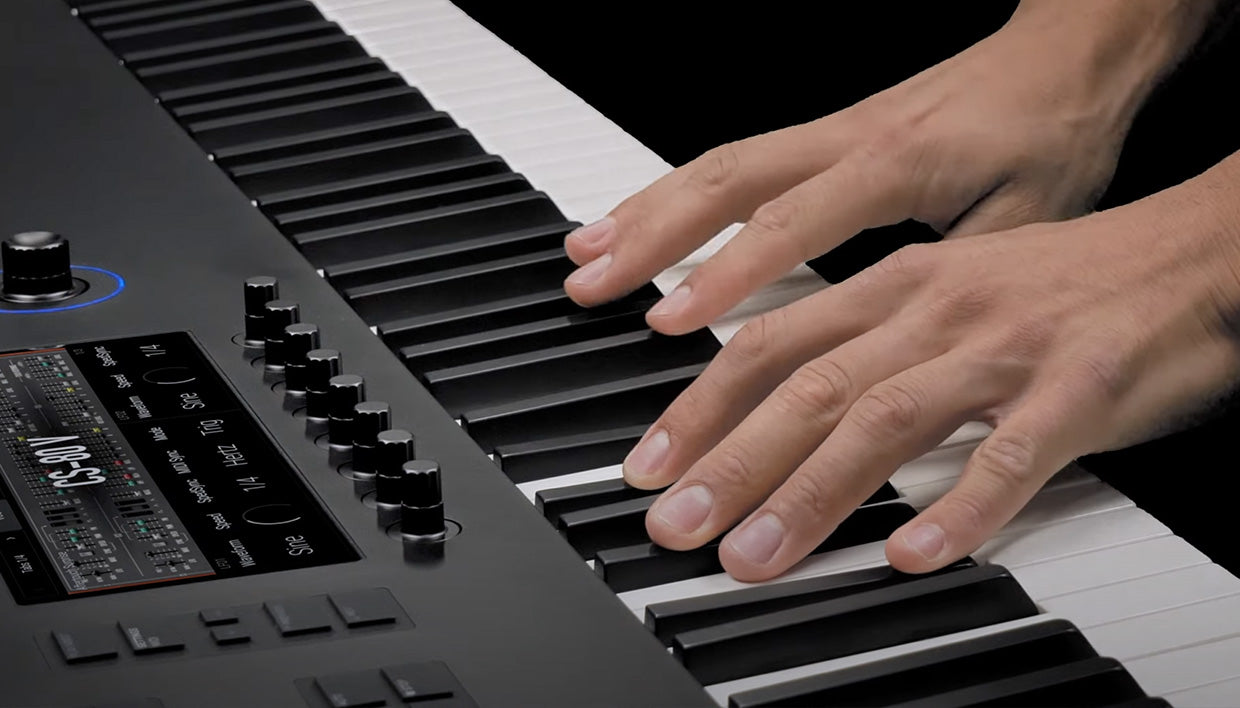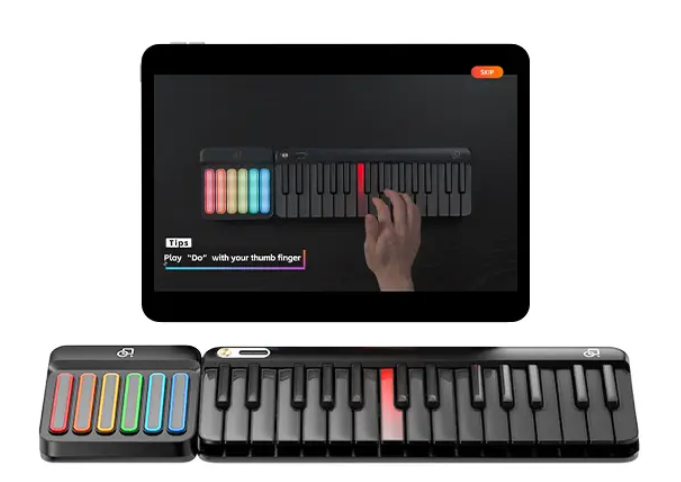
Landing your first (or next) MIDI controller shouldn’t drain your wallet—or your creative spark. The 2025 crop of best cheap MIDI controllers proves you can score solid keys, pads, and knobs without blowing your gear fund.
Below you’ll find warm‑hearted advice, real‑world price points, and a handful of small‑but‑mighty options that punch far above their sticker tags.
|
Price Tier |
Controller |
Why It Stands Out |
|
Under $50 |
Nektar SE25 |
|
|
Under $100 |
Akai MPK Mini Mk3 |
|
|
Donner DMK25 Pro |
||
|
Alesis V25 MKII |
||
|
Under $150 |
Novation Launchkey Mini MK4 |
|
|
Arturia MiniLab 3 |
||
|
IK Multimedia iRig Keys 2 Mini |
||
|
Under $200 |
Akai MPK Mini Plus |
|
|
Nektar Impact LX49+ Mk3 |
||
|
Smart‑Learning Pick |
PopuPiano Smart Keyboard |
Two octaves of velocity‑sensitive mini keys, six smart function buttons, and Nektar’s tidy DAW integration turn this pocket‑sized board into a real instrument. Whether you’re jotting melodies on the train or triggering drums in class, it’s shockingly capable for the price. Put simply: toss it in your backpack and forget it’s there—until inspiration hits.
Best For: Ultra‑mobile producers, gift‑worthy starter board
Keep in Mind: No knobs or pads, so pair it with software drum pads if needed.
The third‑gen MPK Mini still rules the sub‑$100 world. Eight MPC‑style RGB pads, eight endless knobs, and that trademark red‑trim look make it the go‑to “cheap MIDI keyboard” for beat‑makers. The Gen 2 keybed feels springier than earlier versions, and Akai still bundles MPC Beats plus a healthy plug‑in suite.
Best For: Hip‑hop and electronic producers craving tactile pads
Watch Out: Pads sit close to the keys—fat‑fingered friends might need practice.
Donner surprised everyone with the DMK25 Pro: sturdy chassis, double‑bearing pitch/mod touch strips, and 16 RGB pads normally reserved for pricier units. Reviewers praised its workflow inside Cubase and other DAWs. At roughly the same cost as eating out twice, it’s a steal.
Best For: Pad‑focused creators who still want knobs and transport controls
Watch Out: Donner’s software bundle is slimmer than Akai or Novation.
Crave real‑piano‑width keys without blowing your budget? The V25 MKII delivers 25 full‑size synth‑action keys, eight pads, four knobs, plus a six‑mode arpeggiator. It even ships with MPC Beats and virtual instruments, so you’re recording moments after unboxing.
Best For: Keyboard‑forward players who still want pads
Watch Out: Slightly bulkier than mini‑key options.
Ableton Live user? This is your match. The MK4’s chord, scale, and generative arpeggiator modes spark happy accidents, while deep Live integration lets you launch clips, control macros, and navigate tracks without the mouse. Plastic build, sure, but the workflow lifts any Live set.
Best For: Ableton‑centric producers, touring DJs needing clip control
Watch Out: Pads feel firmer than Akai’s; some prefer the spongier MPC feel.
MiniLab 3 flaunts Arturia’s best‑in‑class rotary encoders and super‑smooth touch strips. Out of the box you get Analog Lab Intro with 500‑plus classic synth patches, so your blank‑session anxiety disappears fast. The controller’s smart presets auto‑map to major DAWs, saving serious setup time.
Best For: Sound designers itching to tweak synth parameters
Watch Out: Only two banks of pads (eight total) vs. 16 on some rivals.
Laptop? Phone? Tablet? The iRig Keys 2 Mini plugs into all of them and even packs a mini headphone jack so you can monitor without a separate interface. That alone justifies its sub‑$130 price for buskers and vloggers.
Best For: Musicians crafting beats on iOS/Android apps
Watch Out: No pads; this board is about notes, not finger drumming.
Step up to 37 mini keys, scales/chords modes, a real‑deal sequencer, and even CV/Gate outs for hardware synths. Under $200, the MPK Mini Plus bridges laptop beat‑making and modular tinkering—a rare feat.
Best For: Creators straddling software and hardware worlds
Watch Out: Slight bulk jump; won’t fit in ultra‑tiny bags.
Fresh for 2025, the Mk3 refresh adds a redesigned keybed, NKS support, eight faders, plus an ingenious high‑resolution encoder for silky parameter sweeps.
At $129.99 for the 25‑key and about $199 for the 49‑key, it’s a true “best budget MIDI keyboard” for producers who need broader range.
Best For: Home‑studio builders wanting faders for mixing
Watch Out: Definitely desk‑size; skip if you need couch‑friendly.
Yes, it’s pricier (sale starts around $309 for the base kit), but hear us out. Smart Keyboard merges a 25‑key LED‑guided board with a colorful chord pad and app‑based lessons. Snap on the optional 36‑key expansion and you’ve got a full 61‑key rig—still lighter than most stage pianos.
For total newbies who’d rather “follow the lights” than stare at sheet music, it’s a confidence‑booster. Plus it doubles as a standard MIDI controller cheap enough to replace later on.
Best For: Visual learners, TikTok‑era pianists, classrooms
Watch Out: Modular parts add cost; no drum pads.
Pick the board that matches your workflow today—not some hypothetical studio someday. Cheap doesn’t mean disposable; most of these controllers have helped thousands finish tracks, perform live, and land placements. And if you want a gentler learning curve, swing by PopuMusic and light up those chords with PopuPiano. Your first banger might be only a few LED flashes away.
Expect “midi keyboard cost” anywhere from $49 for the Nektar SE25 up to about $169 for premium mini‑boards like the Korg microKEY Air. Full‑size yet still budget‑minded options sit around $199.
Grab the Akai MPK Mini Mk3 if you want pads, or the Nektar SE25 if you only need keys and ultra‑portability.
Two octaves (25 keys) cover melodies, bass lines, and drum chops. If you play piano‑style chords or two‑hand parts, 49 keys feel roomier without destroying your budget (see the Nektar Impact LX49+).
Korg microKEY2 Air’s Bluetooth connection means one less cable. Battery life hits months on a pair of AAs.
Yep. iRig Keys 2 Mini includes Lightning/USB‑C cables, while most class‑compliant controllers work via Apple’s USB‑C adapter.
Yes—most budget controllers are class‑compliant USB‑MIDI, so they plug‑and‑play with Ableton Live, FL Studio, Logic, GarageBand, Reason, Reaper, and Bitwig. If your “best budget MIDI keyboard” doesn’t auto‑map, use your DAW’s MIDI Learn or install the maker’s script/template.
Go wired USB instead of Bluetooth, set your audio buffer to ~128–256 samples, and use ASIO drivers on Windows (Core Audio on macOS). Close heavy plug‑ins and background apps, and stick to 44.1 or 48 kHz sample rates. If you need tighter monitoring, an entry‑level audio interface helps.
Read more

What Is Polyphony on a Keyboard? Why It Matters for Piano Players
If you’ve shopped for a digital piano or a 64-key keyboard piano lately, you’ve probably seen numbers like 32-note, 128-note, or even 256-note polyphony splashed across spec sheets. But what exactl...

What Is a Smart Piano Keyboard? The Beginner’s Guide to Digital Learning
Ever wished the piano could lean over your shoulder and whisper, “Ps st… hit the next G‑sharp here”? That’s the basic idea behind a smart piano keyboard—an instrument that blends traditional keys w...